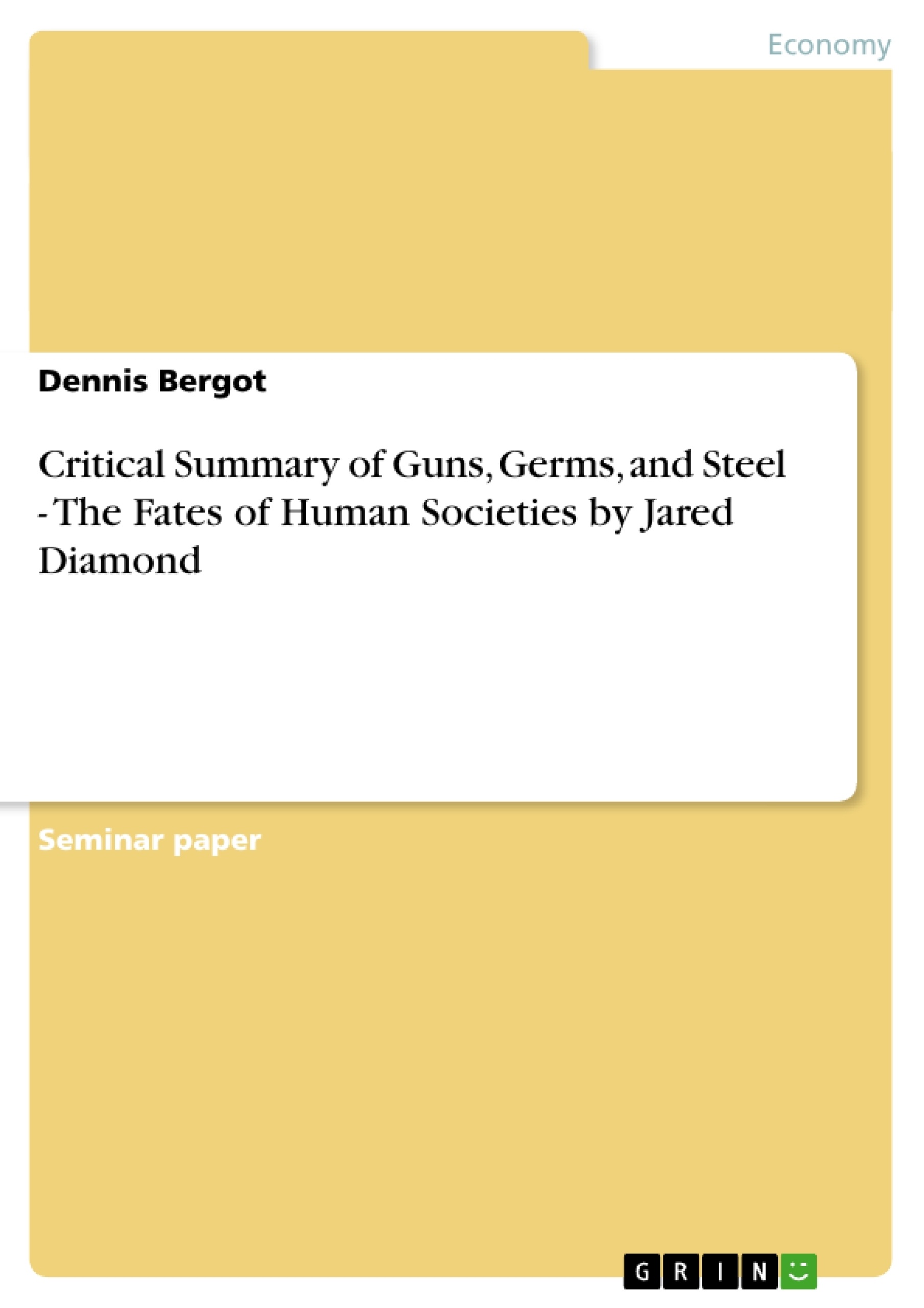The starting point of Diamond’s book “Guns, Germs, And Steel” is a question he was asked by an indigenious New Guinean friend of his called Yali. His question was: “Why is it that you white people developed so much cargo and brought it to New Guinea, but we black people had little cargo of our own?”1, adressing the obvious inequality in wealth and power of today’s world. With his book, Diamond tries to provide an answer for this question. According to Diamond, the immediate causes for the inequalities in the world today are to be found in the different stages of development between the continents as of around A.D. 1500. By that time, only societies of Eurasia, the landmass that constitutes Asia and Europe, and there especially the Western Europeans, possessed ocean-going ships, population-decimating germs, steel weapons, horses usable for warefare, easy spread of information by an efficient writing system and many other means that come in handy decimating, subjugating or in some cases even exterminating the originial inhabitants of other continents. Diamond calls these advantages the proximate factors of differing developments that led to the inequalities. The book’s title “Guns, Germs, And Steel” can be understood as a summary of these proximate causes. In chapter three of his book, Diamond cites as a prominent example of the inequalities the conquest by the Spaniard Francisco Pizarro and a few hundred soldiers over the Inca emperor Atahuallpa at Cajamarca/Peru in A.D. 1532. The Spanish got there and won because they possessed the above stated proximate factors. He then turns the point around and asks why, for instance, the Native Americans or Aboriginal Australians were not the ones who possessed these proximate factors and used them to conquer Europe. [...]
Table of Contents
- Introduction
- Diamond's chain of causation
- The starting position
- The proximate factors of differing development
- The role of food production
- The dual capacity of domesticated animals
- The ultimate factors of differing developments
- Availability of ultimate factors
- Conclusion
- Comments
Objectives and Key Themes
This paper examines Jared Diamond's theory in "Guns, Germs, And Steel" regarding the unequal development of human societies, specifically addressing the question of why certain civilizations progressed faster and achieved greater levels of technological advancement than others. It analyzes the arguments presented in the book to determine how effectively Diamond's perspective can explain the disparities in wealth and power across different continents.
- The role of food production in driving societal development
- The impact of domesticated animals on technology and warfare
- The influence of geographical factors on historical progress
- The relationship between environmental factors and the rise of complex societies
- The impact of technology and cultural development on the interaction between societies
Chapter Summaries
The paper begins by outlining Diamond's central argument, which posits that the unequal development of societies is primarily driven by differences in the availability and accessibility of resources and opportunities. The author explores the crucial role of food production, highlighting how domesticated plants and animals provided food surpluses, leading to population growth, the emergence of sedentary societies, and the specialization of labor.
Diamond delves into the consequences of food production, exploring its impact on technological advancements, the development of complex societies, and the spread of diseases. He examines the various factors that contributed to the differing levels of development across continents, including the geographic locations of civilizations, the availability of domesticable plants and animals, and the prevalence of certain diseases.
The paper explores the implications of these factors, highlighting how certain continents, such as Eurasia, possessed a combination of advantages that enabled them to develop more quickly and effectively conquer and influence other regions.
Keywords
The key terms and concepts explored in this paper include: food production, domestication, geographical factors, technology, societal development, warfare, disease, conquest, Eurasia, New Guinea, indigenous societies.
- Quote paper
- Dennis Bergot (Author), 2004, Critical Summary of Guns, Germs, and Steel - The Fates of Human Societies by Jared Diamond, Munich, GRIN Verlag, https://www.grin.com/document/22011




